Chapter five: Ricardo’s favourite shoemaker
IF YOU BELIEVE Ricardo, he discovered the world’s most generous bank. It was located in Vaduz, in Europe, it lent him millions and charged interest, in the words of the Senator Alvaro Dias investigation, ‘absurdly below market rates.’ In fact, he never paid any interest or the loan back.
Yes, it was the Bank of Sanud and he was its only customer.
We may never know how Ricardo laundered all of Sanud’s $9.5 million out of Vaduz and into his pocket. Maybe it helped buy luxury homes in Delray Beach and Miami, Florida. But some landed in his Rio business R. L. J. Participações Ltda.
Sanud, the anonymous brass plate, owned 50% of the shareholding.
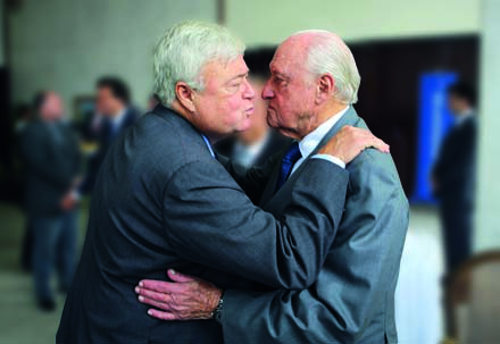
Havelange was once Teixeira’s father-in-law.
(Courtesy Wilton Junior/AG)
Former wife Lúcia Havelange Teixeira, had 24.99% and Ricardo had 25.01%.
But RLJ was a sham. According to the report from Senator Dias, it never generated a penny in earnings. It was a shell, stuffed only with what Ricardo embezzled from FIFA. In Ricardo’s accounts, unearthed by the investigators in Brasilia, he owned a series of interlocking bars and restaurants in Rio including the Chopp House, the El Turf and the Port City.
The common thread was that they didn’t make money, they borrowed it, sometimes through offshore banks in the Caribbean, and Ricardo’s CBF paid them to cater for elaborate football functions.
IN 1989, RICARDO, backed by his mobbed up father-in-law, took control of the Brazilian football federation, the CBF. The national team were contracted to wear kit supplied by the Umbro company.
After their 1994 World Cup victory in the USA, the value of the Seleção soared. Secret meetings began soon after and in July 1996 Ricardo disappeared to New York. He took a business associate, who made good profits out of their friendship, but there’s no record of any other officials from the CBF.
A bunch of American businessmen from Beaverton, Oregon, whose company was registered across the Atlantic in a European tax haven, were waiting for him with their lawyers and a document containing 11,500 words. Ricardo signed it and gave control of Brazilian football to a foreign shoemaker.
The Americans, via their tax haven, paid Ricardo $160 million – with the promise of more later – and bought the right to choose players for the Seleção and tell the team who they could play and where and when. There would be 50 of these games. They could open their own shop inside the CBF offices in Rio.
The contract specified that the shop could only sell branded shirts produced by the Americans – and their branded pants, socks, knitted pullovers, shirts, jackets and sweater sets, handbags, backpacks, headbands, hats, gloves, wristbands, glasses, protectors, special glasses to improve performance, training vests, towels, umbrellas and scarves, all with the Swoosh logo of the shoemaker.
There would also have to be footwear for running, basketball, tennis, training, golf, hiking, aerobics, baseball, American football, cycling, in-line skating and volleyball. And football. And footballs.
At home matches a circular banner, 25 metres in width and displaying their Swoosh logo, would be placed in the centre of the pitch. Any disputes over the contract could be resolved only in the courts of Zurich.
The foreign shoe company was paying lots of money and by the time the first tranche arrived in Ricardo’s hands it had bounced around between Holland, three banks in America, one in the Bahamas and two more in Belo Horizonte and Rio.
When big bucks travel these circuitous routes it is commonplace that bits fall off.
Ricardo’s travelling companion to New York, José Hawilla, who controlled the Traffic marketing company, was the only other Brazilian to sign. José had acquired rights to use the CBF to his own advantage soon after Ricardo took power at the CBF, The contract would give him $8 million over the next ten years.
Senator Dias denounced what he called the ‘spectacular profits’ that Hawilla made out of his dealings with the CBF. Dias added that it was yet another example of ruinous administration by Teixeira. It was alleged that between 1995 and 1999 Hawilla’s tax filings revealed that his personal wealth had increased 20 times.
In the same year, 1996, the price of Ricardo’s co-operation with ISL was $1.5 million. You cannot help but wonder, what were his dealings with Nike?
Did he try his normal tricks on them? Did he try and shake them down, telling them of his account in Vaduz?
Could he have been a tougher negotiator? Could he have got more money for Brazilian football?
What really happened to Brazil footballl star, Ronaldo, in Paris in the hours before the World Cup Final against France?
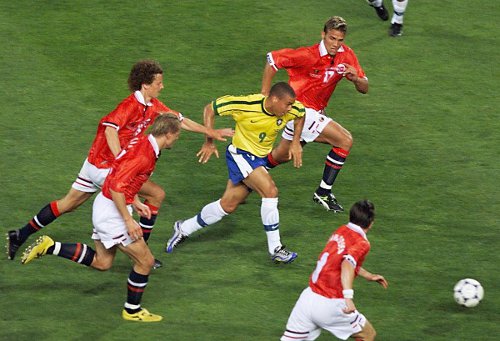
(Copyright AFP 2014/Georges Gobet)
Sometimes the simple answer may be the true one. The expectations of Brazil, of the world and its biggest shoe retailers put impossible pressure on a 21-year-old athlete, his nervous system rebelled and his mouth frothed.
Did the shoe company pressurise him to wander the field, because they had made him their poster boy for the final? The people who know say little.
But reactions at home to this debacle and the way Ricardo manipulated the CBF stirred enough rage to ensure that the elected politicians must ask questions.
NIKE’S MONEY began pouring into Ricardo’s open hands on the first day of January 1997. Four years later the CBF was insolvent. If it were a business, it would be bust, broken up, sold for scrap. Senator Dias’s investigators estimated that by the end of 2000 the CBF was in debt to the tune of $31 million.
How did that happen?
There were some extraordinary secret financial deals done at Ricardo’s private empire. The shoemaker’s fabulous windfall money wasn’t enough for Ricardo’s manipulations, bribes and payoffs to keep control of Brazilian football. Something very smelly was happening.
He went abroad and borrowed money in a way that may never have happened ever before.
In October 1998, the year after the Nike tap began to flow, Ricardo decided that the CBF needed to borrow $7 million from the Delta National Bank of New York. Dias’s investigators discovered that at the time Delta were charging Brazilians – companies and individuals — between 9% and 10% interest.
Ricardo agreed to pay an astonishing 43.57% rate. And . . . sit down for this . . . he paid the interest — $650,000 — before it was due. That boosted the final rate up to an unbelievable 52%!
As with the Nike money, the Delta loan had to travel. It was routed to another New York bank, then to the tax haven of Nassau, Bahamas and then to the CBF account with the Rural Bank in Belo Horizonte.
As with most CBF money transfers, large amounts fell off en route. Ricardo could not give any explanation for any of this when questioned in Brasilia.
Ricardo seemed addicted to Delta, agreeing to a series of loans with high interest rates and the money slimming down as it travelled through the international banking system on its way to the CBF.
Two months after that first Delta loan Ricardo signed up for another $4.5 million, this time at a 25% rate of interest. Again, the loan was repaid early, boosting the true rate to more than 30% and again, it travelled from New York through the Caribbean, losing hundreds of thousands of dollars on the way.
Both loans seemed hard to justify because within two months a fat $15 million was due to arrive in Brazil from the shoemaker.
But Ricardo couldn’t kick the Delta habit. Thirty-five days after the last loan, he signed up for another U$10 million agreeing to pay 25% interest. Days later he was borrowing again from Delta, but this time for his own El Turf bar.
Ricardo declined to explain why the cost suddenly plunged and he paid the same that other Delta clients in Brazil were paying – 12%.
The CBF was back in the Delta casino in September 1999 borrowing $3.7 million at 21%, double the current market rate. Into 2000 Ricardo still could not shake the Delta habit, borrowing another $10 million at 16%.
Finally, in September 2000 there was a sixth loan of $4.5 million at 14.5%.
In April 2001 Ricardo claimed to the Congressional investigation that there was nothing unusual about the rates he paid Delta. He named eight Brazilian companies and institutions, claiming they paid similar rates.
Within days every one of them replied, ‘Not true!’
The CPI (Comissão Parlamentar de Inquérito) final report stated, coldly, ‘The president of the CBF submitted false information.’

(Courtesy Forbes.com)
THE HONEST POLITICIANS in Brasilia soon learned that Ricardo’s relationships with banks never ceased to amaze.
In July 1996 he opened a personal account with the Banco Vega, depositing $190,000. The next day he opened an account for the CBF giving Vega $1,027,940. His friend Antonio Coelho, the key executive at Banco Vega, arranged for Ricardo to receive a rate of interest nearly double what was paid to the CBF.
Lots more CBF money was entrusted to Vega. Many mysterious things happened and in May 1997 Brazil’s central bank closed Banco Vega down. It was realised later that Antonio Coelho was a member of the CBF’s finance committee.
There were more mysteries about the way Ricardo did business with the CBF’s money. They frequently needed to engage in currency exchange and a company was contracted to get them the best rates in the market.
All seemed well when the agents got a rate of 0.19% above the Central Bank rate for that day to buy a mere $185 for the CBF. Then Ricardo authorised the agent to buy $700,000. The charge to CBF? It was 15.44% above the Central Bank rate.
The Dias investigation called it ‘looting.’
As the shoemaker’s money boosted the CBF’s income to unparalleled heights, Ricardo continued getting bad deals in the money markets and pushing Brazilian football deeper into debt.
He went outside the banks and borrowed money from private, unregulated lenders, sometimes paying up to 100% interest. In 1998 alone Ricardo authorised paying $178,918 interest on two of these loans. The investigators discovered more and their comments were scathing.
Sometimes the CBF chequebook needed a tourist passport. Its money just loved to travel, Sometimes, like unfortunate travellers, it disappeared.
When Brazil competed in the Gold Cup in America in 1998 the CBF sent $400,000 to a bank in Miami. The money didn’t gather dust. Swiftly, it was travelling again, this time back south to a bank in Montevideo.
The CPI investigators could not find out what happened to the money or why it was sent to Uruguay. They did discover that a close friend and business associate of Ricardo handled the transfer.
Brazil was knocked out by the USA and in the general mourning, nobody noticed the disappearance of $400,000.
THERE WAS SOMETHING puzzling about Ricardo’s psychological makeup.
The Congress investigators discovered there were two Ricardos. One was the incompetent administrator, the naif in the financial markets who innocently agreed deals with predators who drained the CBF’s wealth and drove it almost to bankruptcy, despite the huge income from the shoemakers.
The other Ricardo was a different man; the smartest operator in the financial markets. The Congressional investigators analysed Ricardo’s private dealings in the Commodities and Futures Exchange. Every year between 1995 and 2001 he made profits. They calculated he had made 1,409 deals in that time – that’s a deal every 36 hours!
Many of his deals were gambling on future prices for US dollars. He was very good at it, very successful and made lots of money for himself. It seems he forgot all these skills when it came to managing the affairs of the CBF.
Was it the idiot Ricardo or the smart Ricardo who forgot to hire an independent auditor at CBF? Senator Dias pointed out that this meant stakeholders in Brazilian football didn’t know what was happening to the windfall from the American shoemakers in Oregon.
THE WINDFALL soon found its way into the pockets of Ricardo and his tight little team controlling Brazilian football. They began paying themselves well but it never seemed enough and between 1998 and 2000 they increased their salaries by 300%.
Ricardo’s soared to $239,267 although there was no evidence that he worked any harder. But the biggest winner was Ricardo’s uncle Marco Antonio, the CBF secretary general, who by 2000 discovered he couldn’t feed his kids on less than $286,000 a year. To help with new shoes for the little ones Marco and the rest of the gang paid themselves 13th and 14th monthly salaries.
The CBF’s board of directors were not cheap to employ. The income of the Confederation quadrupled – from $18 million in 1997 to $79 million in 2000. The CBF’s expenses rose even faster with increased salaries, bonuses, interest and debt charges and by 2000 they were in debt!
Ricardo found a quick answer. Reduce the amount spent on football from 55% to 35%! There was no choice if Ricardo was to lead the imperial life that he demanded.
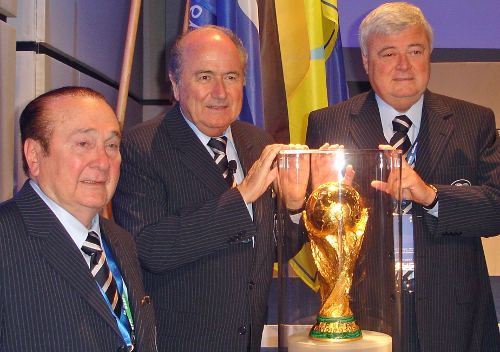
In October 1997 he spent four days in New York and couldn’t bear to take taxis like everybody else. So he hired a limousine on permanent standby for any little trip around town and that drained $1,185 out of the CBF. And he wasn’t cheap to feed!
The congressional investigators analysed his dining bill for three months in 1998. They looked at 18 meals costing a total of $12,594.40 and pointed out that when the CBF President eats it costs an average of $700.00 per meal.
The CBF gave Ricardo a credit card and it never stayed in the dark long enough to gain cobwebs. The card became well-known at the Lidador shop, famous for their fine champagnes.
RICARDO ENJOYED CHAMPAGNE by the bucket at his own El Turf restaurant in February 1996. As well as the Dom Perignon and many bottles of aged whiskey, there was fillet steak and juicy chicken, washed down with 1,300 litres of beer, all paid for by the CBF. He and his friends were celebrating the launch of the IAFB — Institute Assistance Futebol Brasileiro.
It sounded wonderful. Ricardo said the purpose of this non-profit association was to improve the lives of 60,000 players, past and present. It would help them find jobs, vocational courses, five hospitals would be built for injured players, there would be free life insurance and legal assistance for former athletes and their dependents.
The Congressional investigators could not find any hospitals. They couldn’t find any benefits to any players. But they found a lot of benefits for the friends of Ricardo.
He personally appointed the staff of 17 – three were sisters and two were also paid salaries by the CBF — and 95% of the grant to the IAFB went into their pockets. The rest went on stationary and utilities bills. Senator Dias commented, drily, ‘very little is left to carry out concrete actions.’
Another concern to Dias was that one of the members of the IAFB supervisory board was Wagner Abrahão, a close friend of Ricardo who had substantial business deals with the CBF. The CPI report asked, was it likely that he would criticise anything at the IAFB?
(We will return to Mr Abrahão in Chapter 7 when we look at World Cup business.)
AFTER THE WORLD CUP there were some funny things happening at FIFA’s finance office.
In 1999 Ricardo sent the enormous amount of $2,989,593 from the CBF to FIFA. Asked why, Ricardo was at his most obscure. It was ‘a settling of accounts to offset receivables and payables between two entities’ – whatever that meant.
Where did the money really go? Where did it go after landing at FIFA?
Neither Blatter nor Teixeira will answer.
The saga of Brazil’s money from the French World Cup and FIFA continued into 2000. One day Ricardo walked into FIFA’s Finance Department in Zurich. He was carrying a bulging bag.
‘How can we help you, Sir?’ he was asked.
He opened the bag and out tumbled $400,000 in cash.
Straight-faced, Ricardo claimed the money was an advance payment due to the Brazilian federation for the costs of their appearance at the 1998 World Cup in France, twenty months earlier. He didn’t explain where he had acquired so much cash – and from whom.
Ricardo told them to transfer the money to the CBF account. The Finance clerks were puzzled – they thought that this sum of money had already been paid to the federation. But when they checked, there was no record of the money arriving at the CBF. Ricardo’s story was mystifying from beginning to end.
The clerks agreed to transfer the money to the CBF – but insisted it went to the federation’s current account, marked as a payment from him.
‘Oh no,’ said Ricardo, ‘that isn’t what I want.’
Instead he asked for the money to be returned to him – but this time in a cheque. Amazingly, he got it. In that moment, FIFA House changed from being the home of football into a one-stop, criminal, money-laundering shop.
A couple of days later Ricardo went back to the FIFA office, returned the cheque and asked for his cash back. Astonishingly, FIFA’s finance department agreed – and gave him the $400,000 back in a bag. It’s likely that he took a taxi to his favourite Zurich bank with a document saying that FIFA had paid him the money.
I found this story buried on page 19 of the confidential annual Management Letter for the year 2000, sent by FIFA’s auditors, the Zurich branch of KPMG to Blatter. KPMG, were politely horrified, recommending that in future cheques or cash should only be made to ‘authorised people.’
I emailed Ricardo, KPMG and FIFA, asking about the source and destination of this money. None replied.
REPORTERS INVESTIGATED CBF and wrote stories revealing Ricardo’s mismanagement and the money mysteries. The fans hated him.
Why didn’t the judges, the politicians, the lawyers and other football officials blow the whistle, wave red cards, get him jailed? How did Ricardo get away with it?
Answer: They were being paid off. The shoemaker’s flood of money was diverted away from football to fund political campaigns, creating a network of politicians who would protect Ricardo’s rackets in Brasilia and State governments.
Cash was ‘donated’ to state football federations who then passed it to politicians to fight elections. CPI investigators discovered that CBF donations to improve football would rest only 24 hours in the accounts of some State Federations before being shifted sideways to the politicians.
Dias described the stealing as a triangular relationship between the CBF, federations and election campaigns. It was a fraud, vote-buying in a country that was struggling to learn again to be a democracy following two decades of military dictatorship.
By 2000 the ‘donations’ had soared to more than $7 million. That was the price of protection – but the money was being ‘donated’ by the generous folks in Oregon – without their knowledge, of course.
The CBF did not ask for accountability from Federations on how they spent the money – and there was another giveaway. They did not have to pay their annual subscriptions to the CBF.
Dias said that Teixeira letting them keep the money created ties of dependence and subordination. He described the Federations as distributors of perks and strongholds of nepotism, their primary purpose to support politicians who are elected indefinitely.
The politicians who made it to the Congress in Brasilia found that Ricardo looked after their every need. A mansion valued at $1 million was rented on a farm on South Lake for their exclusive use.
Ricardo never forgot what his partner Sepp calls ‘the Family of Football.’
In the year 2000 $8,000 was sent to a community north east of Rio. In the CBF accounts it was recorded as ‘Help to City of Pirai.’ The money was moved immediately to the account of a cousin of Ricardo who was hoping to be elected for the local council. Dias also noted that Ricardo owned three farms in Pirai. Shamelessly, he sold milk from them to the CBF.
Dias concluded that while the politicians in Ricardo’s network did very well out of the shoemaker’s money, there were no systematic donations to former players or their associations.
Ricardo purchased his politicians. Many people thought he also purchased his judges. Several enjoyed all-expenses paid trips to the World Cup in America in 1994 and again in France in 1998.

They enjoyed business class travel and fine hotels and their wives went with them. Some had sat in judgement over cases involving Ricardo or the CBF. When questioned, one judge explained that he accepted the trips because he thought it important to understand popular culture.
Several of Rio’s lawyers were also keen to take CBF money, even if the litigation was about Ricardo’s private affairs. Whether it was suing reporter Juca Kfouri or defending dirty dealings at the El Turf restaurant, the shoemaker’s money was always available.
Senator Dias’s investigation into CBF corruption in 2001 succeeded despite the best efforts of Ricardo’s team of paid-for politicians. Dias told me, ‘Football had become a huge and profitable business in Brazil, but attempts to investigate were unsuccessful because the CBF kept a close relationship with Governments, the Congress and the Judicial System’.
In the Congress Teixeira created what we call his bancada da Bola, a group of deputies to protect the CBF.
‘I decided to take responsibility, as a senator, to investigate the huge number of complaints of corruption that the Government authorities ignored for so many years. Silently, I worked to get enough Senator’s signatures needed to install an Investigation Committee in the Senate. My strategy, to overcome CBF’s lobbyists and watchmen, was to work to create the investigation committee on Fridays when not so many senators are in Brasilia.’
‘After we started the investigations in the Senate, the members of the “bancada da bola”, for long working under the influence of CBF and Ricardo Teixeira, realized that it was impossible to fight against the Senate committee.’
The CBF’s strategy was to create another investigation committee in the Congress. This was led by Congressman Aldo Rebelo – and he did a good job. But the CBF’s placemen had planned their sabotage: the final report didn’t get enough votes to be approved.
Dias added, CBF and Ricardo Teixeira also tried to compromise the investigations in the Senate. Many senators abandoned the committee, and others were against the final report that indicted 17 cartolas – top officials in Brazilian football — including Ricardo Teixeira.
So I went to the tribune on a day when the Congress was full and the press were present, and denounced CBF’s attempt to corrupt the committee. The press gave big coverage of my speech and none of the Senators wanted to be under suspicion. My Final Report was approved.’
Ricardo Teixeira’s tame politicians had done their best to block the CPI. When that failed, Sepp Blatter stepped in, warning that, ‘We won’t tolerate investigations that put at risk the rules of soccer.’
‘If the Senators called referees and CBF officials to testify, Brazil would be banished from the world game.’
‘Brazil will not take part in the 2002 World Cup, the World Youth Cup,’ said Blatter, ‘and the Under-17 World Cup, the Women’s World Cup and the Futsal indoor tournament in Guatemala.’
This did not impress Senate President Antonio Carlos Magalhaes.
‘The Congress won’t let itself be intimidated,’ he said.
‘We need to bring morals to this country and that has to involve soccer. If the price to pay for this is not participating in a World Cup, then let the price be paid.’
No more was heard from Blatter but this wouldn’t be the last time that he completely misjudged popular feeling in Brazil. The Seleção went on to defeat Germany in the 2002 World Cup final in Japan.
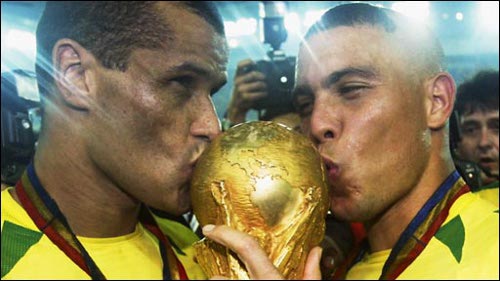
(Courtesy bbc.co.uk)
What would the sponsors and the world’s TV networks have said if Brazil had been banned?
But even Dias couldn’t get the full truth.
Early in the morning of June 27 1999 a fire was discovered at the CBF training centre in Teresopolis. A storage facility containing important documents relating to CBF financial history, including the accounts from 1985 to 1994, was destroyed.
The Senators asked for an investigation into whether the fire was lit deliberately. Nothing happened.
Dias recommended criminal indictments for Teixeira. The CBF boss should have been jailed many times over.
For reasons we can only speculate about, the police, the prosecutors and judges failed to deliver the investigations and penalties the people deserved.
Editor’s Note: Click HERE to read Chapter One of Omertà: Sepp Blatter’s FIFA Organised Crime Family.
Wired868 has been authorised to publish excerpts from Omertà for readers. We urge you to purchase an online version of the book for just £8 at http://www.transparencybooks.com/
Andrew Jennings has been chasing ‘bad men’ around the world for more than three decades. His book, The Lords of the Rings, on Olympic corruption and the fascist background of the IOC president was named by Sports Illustrated as one of the Top One Hundred Sports Books of all Time.
His last book on FIFA corruption, Foul!, is now in 15 languages despite an attempt by Herr Blatter using FIFA funds in Switzerland to persuade a Zurich court to impose a global ban.
 Wired868 Wired868 for smart sport news and opinion
Wired868 Wired868 for smart sport news and opinion

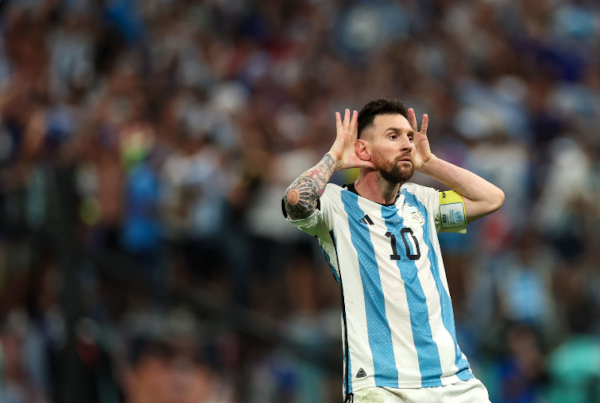
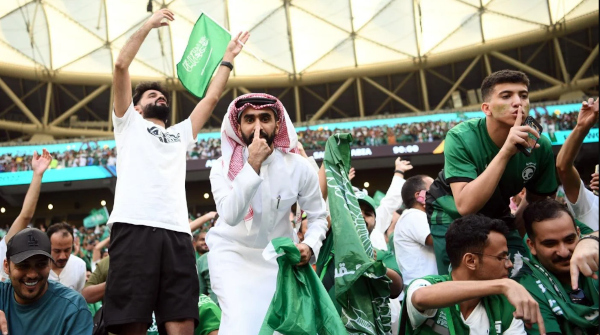
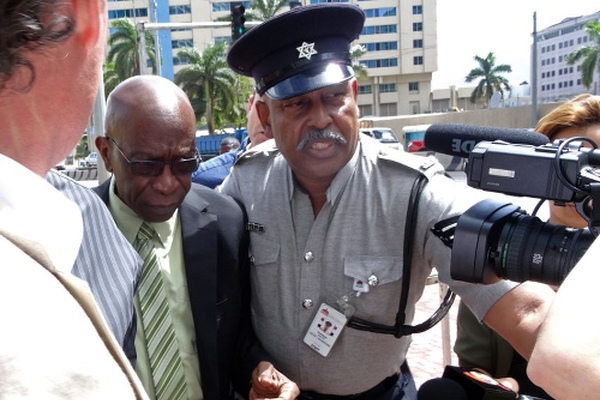
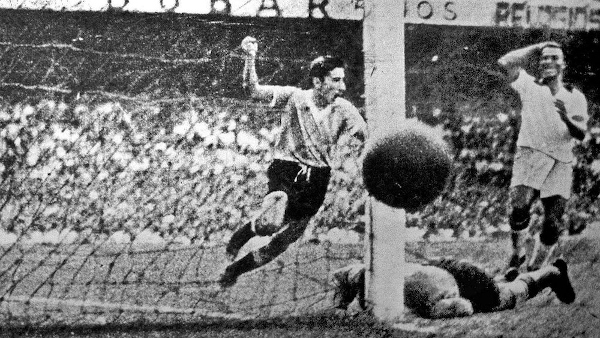
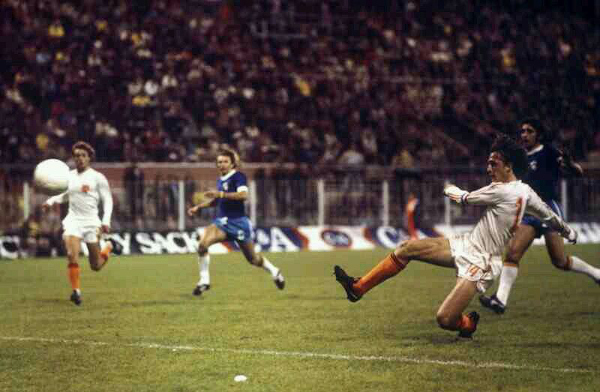

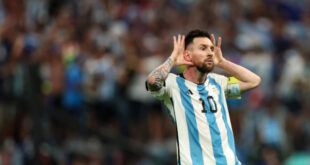
I get dizzy reading this and that’s an achievement
JAW!
OAS
I was only half way through and a certain name kept flashing in me head
This sounds all too familiar! Who taught our politicians to art of laundering?
wasn’t this the same Teixeira connected to with a meeting in a hotel to plan the building of the POINT FORTIN HIGHWAY
And how he is screwing here with the highway to hell destined to be submerged
This is a lesson in the dangers of corrupt administration right here… If we need one, of course.